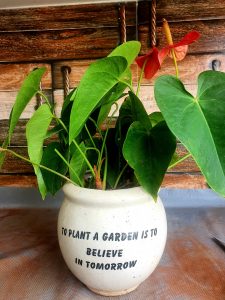Little bit of nostalgia, lots of awe and oodles of...
Read MoreEffective Ways to Calm a Restless Mind During Meditation


- Did I keep the milk back in the fridge? I think I forgot.
- Hey wait, that mail is pending. Should I send it off and sit?
- There’s brinjal in the fridge. What can I make? Last time that curd recipe turned out pretty good.
- Ohh yes, I can write a blog on that too or maybe should I put it out as an Instagram post?
- Ugh, my leg feels numb.
- I can feel some itch in my lower back.
- How long has it been? Am I closer to finishing the session?
- The milk, as soon as I finish I need to check that. Should I set a reminder? I won’t forget no
Somehow, when I sit to meditate, all the day’s work, tensions, ideas seem to begin racing in my mind. The time to sit still becomes more fidgety than the usual.


The monkey mind refers to the primal and natural parts of our minds. Similar to how a monkey swings and jumps from one branch to another, one tree to another, this part of the mind is overly active and bouncing. Apart from driving our fundamental needs, fears and desires it is also responsible for what motivates our immediate gratification. It seeks to do activities wherein we can get entirely engulfed in the tempting pleasures of tasks immediately in hand.
But there is definitely work around this and we can all enjoy some peaceful moments with ourselves shutting the internal chatter and the being oblivious to the outer noise.
I have also noticed some correlation between the days I meditate peacefully and how my mood is set throughout the day which otherwise can make me anxious.
Initially I used to get overwhelmed and would force myself to sit through. Meditation became a chaos than a medium for bringing in calmness.
However, with time I realized that whenever there’s a barrage of thoughts let me not react to it in any manner. Instead, let them come and let them go. For when I used to react and judge myself, the anxiety loop began.
Some quick tips that can essentially help in developing a regular meditation practice –
- Keeping a designated meditation spot. If you would like to make a meditative practice a part of your daily rituals then keeping a dedicated space and allocating specific time makes sense. By consistently making that area, however tiny, as your go to place for meditation, you are infusing it with positive energy that keeps getting accumulated and you can feel the vibes. The moment you step on your mat or cushion you’ll be drawn into it. The point is to make meditation as a practice you look forward to, thereby; the nook you choose to sit can’t be uncomfortable or unpleasant. Something that works as a habit has the mind prepared early on thereby when it’s time to sit quiet it begins functioning that way.


- During your sessions, there are two ways you can lessen the confusions and yield greater benefit from those moments of sitting still.
- The first one is Focused Attention (FA) wherein you focus on a single thing to train your attention – it could be your breath, a candle flame, At times when the mind goes wandering, bring it back to the focal object and continue the session. As many times as this happens is fine, the art lies in bringing back to the focus each time. This is a skill and like all others it only gets better with time.
- The second one is Open Monitoring (OM) where you observe your own thoughts without judgments, no feelings, no labels, no reactions. Look at them from a neutral perspective and you’ll notice how its intensity naturally subsides.
- Start slow. Keep steady. Be consistent. If this sounds cliché then that’s because it is the only way that it works. Starting with only 5 minutes a day to gradually increasing the time over several weeks however you deem fit is the way that it becomes inseparable from you. After many weeks of consistent practice, it becomes an integral part like brushing your teeth. A good check on a habit is you continuing to do it irrespective of day and place. Changing habits over a period of time creates new neural networks in your brain.


- Whether you are seated on the floor or a chair or a cushion, place your hands comfortably. By holding something or placing your hands stretched downwards you are reducing the likeliness of moving your fingers unnecessarily. I place my hands in a mudra pose during the entire session.
By managing your expectations well and understanding that meditation is more an inward journey rather than reaching milestones the whole process will become joyful. Allow some moments after your session for the benefits to penetrate into you and don’t rush into any high energy activities immediately.
Meditation is a journey. It’ll always be one 🙂
Please share my post
My recent posts
The Yellow Tumbler
A short fictional story “The woods,” she said, looking at...
Read More25 Things No One Tells a New Mom But She Should Absolutely Know
Blog Conversations Life Musings Parenting Reviews Wellness About Me X...
Read MoreDo You Have A Happy Corner In Your Home?
Blog Conversations Life Musings Parenting Reviews Wellness About Me X...
Read MoreUseful Links
Subscribe Now
Don’t miss our future updates! Get Subscribed Today!





